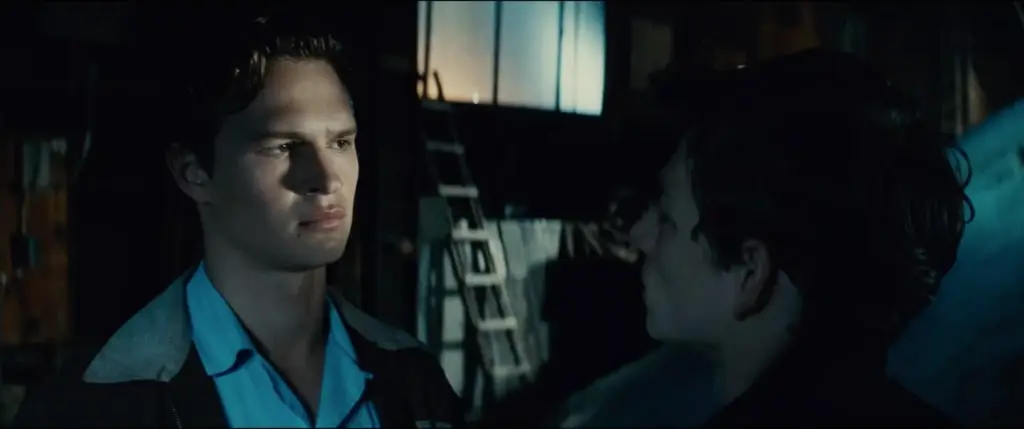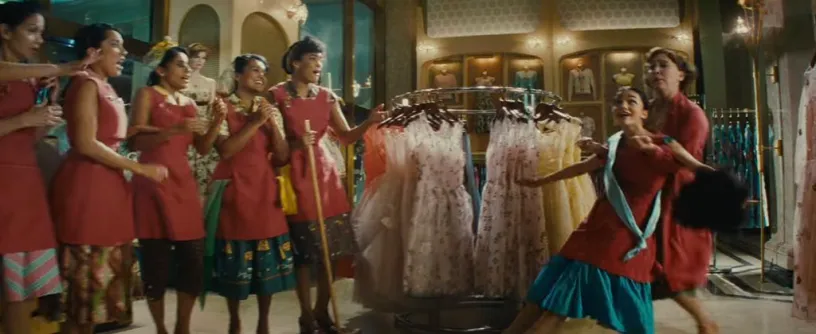West Side Story (2021): A Necessary Remake?
Remakes: a concept both loved and hated by movie-goers everywhere. They promise cozy nostalgic feelings, as well as seeing favorite characters in a new light, but sometimes they ruin a good thing and audiences are left irate. In the past few years I’ve felt overwhelmed by the amount of remakes in theaters. I’ve enjoyed a few (Batman (2022), The Invisible Man (2020)), and been unimpressed by others (Beauty and the Beast (2017)). Usually I approach a remake with some level of caution, and I did the same when watching West Side Story (2021). Written by Tony Kushner and directed by Steven Spielberg, the remake attempts to live up to the 1961 version, which won ten Academy Awards. Was it successful? Well…it’s complicated. Here are my thoughts:

Unfortunately, It’s Sad
If you thought the original West Side Story was a tear jerker, you aren’t ready for the depths of despair the newest version catapults the viewer into. When I first watched the movie in theaters, two words came to mind: “desperation” and “hopelessness.” These two emotions cling to each character and taint most of the interactions they have. There is an overarching feeling that none of the characters really like where they are and are only doing what they do out of necessity. The gang members don’t seem eager to fight each other; rather, they desire family and stability, and the violence they participate in is being done because it has to be out of a sense of duty or loyalty. Desperation and hopelessness are deeply ingrained in the characters of Riff and Tony, especially. Tony believes he is reformed after time in jail and meeting Maria, but in the end is pulled back into violence and death. Riff sees that there is no way out of his dangerous lifestyle and embraces it because it is all he has. The Jets are his only family; the only people that he has found love and support with. The tragedy of poverty hangs heavily over the film, even though it has its fun and upbeat moments.


In the 1961 film, we still see the realities of poverty being played out on screen, but desperation and hopelessness cast less of a looming shadow. This version is decidedly more fun, with a focus on energetic dancing and vibrant costumes. The gang members lack the complexity of Spielberg’s version; they seem to enjoy tussling with each other, or at least they find it invigorating. They aren’t trapped in their situation, but instead are choosing violence at every turn whether it is necessary or not. This version is also much more family friendly, with fights that look like dancing and little to no blood shown on screen.
A Common Enemy

In West Side Story (1961), the heroes are Maria and Tony, and the villains are the members of the Sharks and Jets who realized the error of their ways too late. In West Side Story (2021), both gangs have a common enemy: gentrification. Gentrification, the process of building new affluent businesses and apartment buildings in poor parts of a city, has always been a theme in West Side Story, but it is centered even more in Spielberg’s version. In the 2021 film we see the evidence of gentrification in the set design; buildings are crumbling and construction is ongoing as the story plays out. Some members of the Jets worry about the store where they meet being torn down, and members of the Sharks talk about how they won’t be able to afford the new apartments being built nearby. With their home crumbling around them, both gangs can be viewed through an empathetic lens. Although they may win now and then against each other, there is a bigger rival they will eventually lose to.

Toning Down The Romance

In the 1961 film, the love Tony and Maria have for each other is saccharine, dramatic, and incredibly naive. The two plan on being together forever only a day or two after meeting, and Maria is willing to overlook Tony killing her brother so they can be together. Tony also seems to be able to magically predict their upcoming love affair in “Something’s Coming.” In contrast, Spielberg’s West Side Story tones down the dramatics a bit. “Something’s Coming” isn’t sung about Maria, but rather Tony getting ready for a new life. Tony and Maria still plan to be together forever very early on, but Maria doesn’t seem as ready to forgive Tony for killing her brother. They don’t sing anything together after Maria finds out; instead, “Somewhere” is sung by the store owner, Valentina, as she reflects on her past relationship with Doc. Toning down the Romeo and Juliet style romance in this way allows for the film to branch off into other topics, and by the time the credits roll the viewer will feel as though they’ve watched more than a typical romantic musical. I also think that the subtle choices to dim the intensity of Maria and Tony’s relationship helped modernize the film. I remember feeling that the type of romance portrayed in West Side Story (1961) was overdone, although at the time the film came out it probably felt fresh to 60’s audiences.

It’s Been Modernized

In addition to tweaking the romantic aspects of the original, the 2021 film makes several other changes for the modern audience. One noticeable change is that none of the actors in the recent remake had their skin color altered, a makeup choice that was heavily criticized in the original movie. Spielberg’s film also includes much more of the Spanish language, with large chunks of dialogue written in Spanish instead of a “si” here and there, as it was in the original. I also felt that there was a new weight to the harassment/assault scene that takes place with Anita and the Jets. Valentina reprimands the Jets afterwards and the music and overall tone of the scene is more “modern” in the sense that it’s more dark and serious. Of course, viewers will also notice the better camera quality in the 2021 film, as well as immersive and realistic set design. The 1961 version utilizes set pieces that look as though they are meant for the stage, and although the sets in the older version are well constructed, ultimately the realism of the newer adaptation packs more of a punch.

Old Songs, New Meanings
I can’t review a musical without talking about music. Although the lyrics remain mostly untouched, West Side Story (2021) changes the placement of some of the songs in order to send a different message. The song “Cool,” for example, is placed before the rumble instead of after, and is sung mainly by Tony and Riff. The song brings complexity and depth to Tony and Riff’s relationship, showing their opposing opinions and loyalties, but also showing that Tony cares about what happens to his friend. Overall, it encapsulates a pivotal point in the film, where things could go in either a good or bad direction. Alternatively, in the earlier adaptation, the song is placed after the rumble, and comes off as a desperate attempt by the Jets to regain control over an unsalvageable situation. Riff is already dead, so the song cannot provide depth to his and Tony’s relationship in this version.

Another song that is placed differently and sung in a different setting is “I Feel Pretty.” Originally Maria sings this song in a bridal shop, which highlights the 1961 movie’s focus on romance. In the newer version, Maria sings the song in an expensive-looking department store, wearing a maid’s uniform. The contrast between Maria’s outfit and her surroundings give the song a more somber feel, as if Maria is fantasizing about a life she may never have. The sadness looming over this seemingly happy song is intensified by the fact that it is placed after the rumble. Two characters are dead, and the audience spends the scene feeling worried for Maria’s future self when she breaks out of her pretty fantasy and realizes the truth.

The last song that is subject to an important change in the 2021 film is “Somewhere,” which, as I mentioned previously, is sung by Valentina and not Tony and Maria. The change in the singer changes the feel of the song from a naive love ballad to a conscious reflection about how love isn’t enough. As one critic said: “Valentina and Doc’s romantic story has done nothing to heal this community, so neither will the love story of these two younger people.” (McHenry, Shaw). I think the 2021 version of the song adds to the tragedy of the film, and gives Valentina a very interesting and complete story for a side character.

Returning Favorites & New Faces

On the topic of characters, neither movie would be any good if the actors weren’t. Richard Beymer and Natalie Wood played the part of the infatuated couple perfectly in the 1961 film. They were expressive, good singers, and embodied the drama and naivety of a Romeo & Juliet style romance. In the 2021 version Ansel Elgort struggles with the New York accent and slang at times but otherwise does well and brings depth to the character. Rachel Zegler truly captures the innocence and joy of Maria, and also has a memorable singing voice. Anita is excellent in both movies; Rita Moreno and Ariana DeBose portray her feisty personality well through skirt swishes and high kicks. Moreno returns in West Side Story (2021) as Valentina, where she replaces Doc as a pivotal character and, as I’ve already mentioned, brings new meaning to the song “Somewhere.” Another character I loved in the 2021 movie in particular was Riff, played by Mike Faist. The extra dialogue given to the character by Kushner, combined with Faist’s acting abilities, helps audiences understand Riff’s (and, by extension, the gang’s) motivations more. When it comes down to it I can’t choose which movie had better acting, which is why I think it’s worth it to watch both, if you haven’t already.



